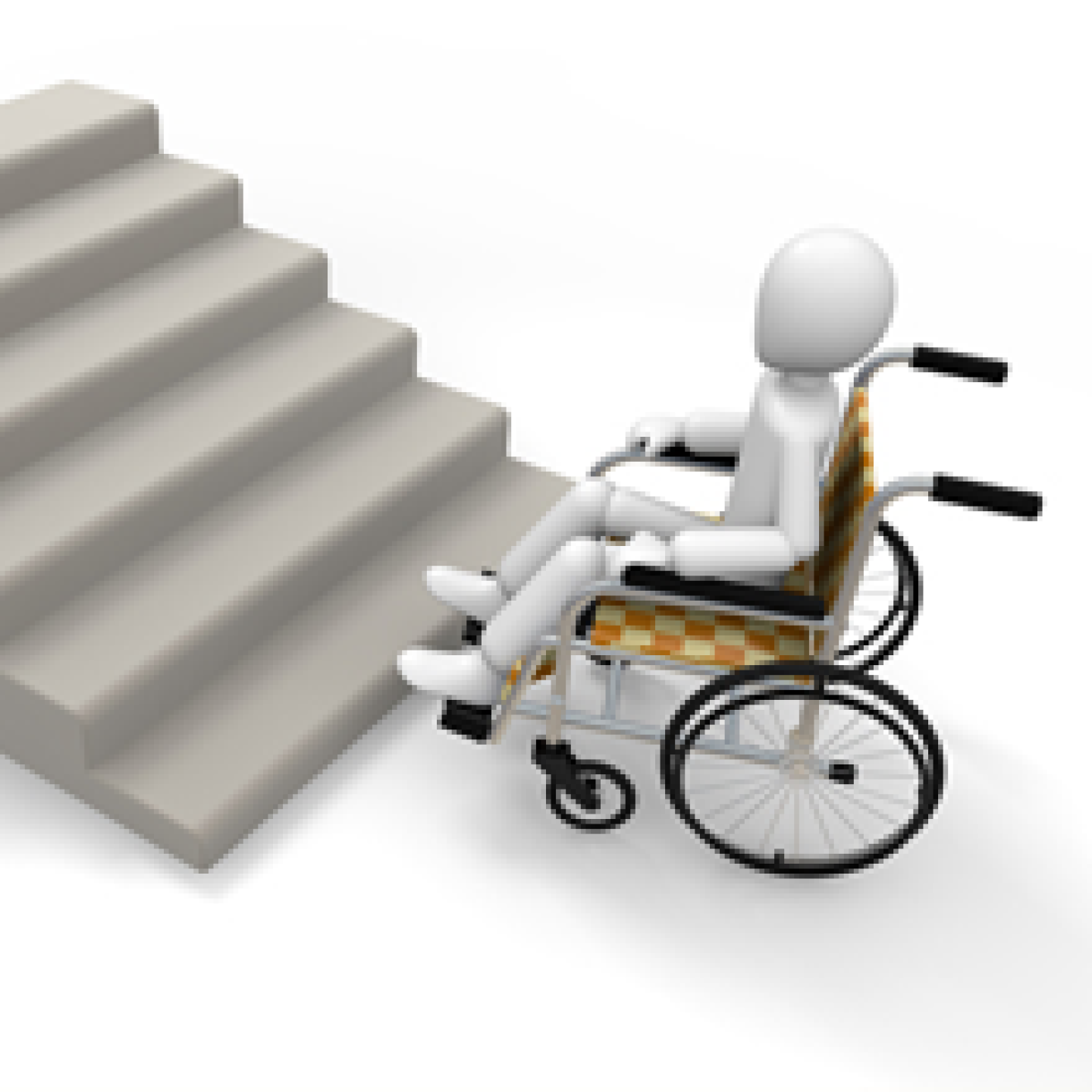UX Challenge: Shifting Your Perspective
Published on April 20, 2016 by Athena Ziavras
My dad has Multiple Sclerosis. This means a few different things. It means that he uses double crutches to walk short distances and a wheelchair for longer ones. It also means that he is much more aware that this world has not been designed for those who have disabilities. Despite his tremendously optimistic attitude and independent spirit, it is impossible not to feel self-conscious when a party of 10 people has to switch dinner locations because the restaurant’s online-advertised handicap entrance was a myth—it was not designed for people with disabilities.
Universal design is a concept with the goal of designing with all ages, abilities, and disabilities in mind and has gained a lot of ground in the last few years. It is related to the Americans with Disabilities Act (ADA), which was passed in 1990 and augments the Civil Rights Act by adding the prohibition of discrimination based on disability.
...it is our job as UX professionals to design products and services that are easy to use and reduce people’s anxiety.
Despite this modification in legislation passed 25 years ago, our world still excludes a significant portion of the U.S. population from equal accessibility. Even though accessibility, no doubt, can be costly in time, effort, and resources, it is our job as UX professionals to design products and services that are easy to use and reduce people’s anxiety; that includes products and services for those who have disabilities.
I have been a witness all too many times to wheelchair users operating in a world that has not incorporated their needs into design. Wheelchair users who were unable to enter a store because of a raised entryway, prevented from using a “handicap” bathroom because of the room’s dimensions, or faced with a handicap labeled entrance even when it had three stairs separating the building entrance from the office. Clearly, these examples were not created with a universal design perspective.
The number of wheelchair users in America has more than doubled in the last 20 years, and now comprises about 1% of the U.S. population. This population segment may use wheelchairs because of pure disabilities or as a result of the deteriorating mobility that comes along with aging. Add in the number of people who use walking aids such as canes and walkers and that number of people with mobility limitations quadruples to 4%.
1 in 25 people will likely encounter a situation (or multiple situations) in which they will be denied access to something or someplace because of bad design.
What that really means is that 1 in 25 people will likely encounter a situation (or multiple situations) in which they will be denied access to something or someplace because of bad design. There is no reason to further complicate people’s existing limitations by making a simple outing a potentially embarrassing and restrictive experience. By limiting accessibility, we are inherently disabling the disabled population. We need to do better, and filmmaker Jason DaSilva has accepted this challenge.
Jason was an up and coming filmmaker who was diagnosed with primary progressive Multiple Sclerosis at the young age of 25 and quickly realized the restrictions that came with using a wheelchair. Refusing to accept a fate filled with frustration and exclusion, Jason took action:
“I’m working on developing AXS Map, a crowd-sourced online tool for sharing reviews on the wheelchair accessibility of buildings in New York City. And while I miss the incredible spontaneity and unlimited access to the city I once had, my diagnosis was not the end of the world….it has provided a new way for me to see and be in the world.”
Similar to Jason’s outlook, engineer Kevin Halsall refused to accept that a wheelchair was the best possible mode of transportation for his friend, who had been using a wheelchair for 12 years. Kevin created a hands-free wheelchair called Ogo, which uses self-balancing technology to provide “mobility with freedom of movement”. With just the use of their core muscles, users can operate this all-terrain wheelchair in every imaginable direction. This immersion into the mobility sphere has not only made Kevin aware of how under-served the disabled population is, but it has sparked many more ideas that he plans to design in the near future.
[Their stories] are also reminders that disabilities—from birth, from an accident, or from aging—can happen to any of us.
Both stories exemplify that taking action towards rectifying this accessibility problem is possible once awareness has been achieved. They are also reminders that disabilities—from birth, from an accident, or from aging—can happen to any of us. Eventually, all of our bodies will begin to feel the effects of the years before us. As life expectancy continues to rise and the Boomers carry on through retirement, we must compensate for a world that will inevitably be home to more elderly than ever, and that means lowering our tolerance for discriminatory design.
With this in mind, I challenge all of you to try and look at the world through the lens of a person with mobility limitations. When you open a door, enter a building, or use a public restroom, ask yourself,
“Could someone with mobility restrictions do these things too?”
Seeing the world through the eyes of someone with different capabilities than our own is by no means an easy task. But then again, that is our responsibility as UX professionals: to identify an actual user’s requirements, limitations, and preferences, and then design for those.
In addition to innovating these solutions to combat discriminatory design, we as researchers and designers need to prevent this poor design from occurring in the first place.
Universal design requires the consideration of people with all ranges of abilities, and it is one of the best ways to tackle the task of identifying these potentially-discrete user requirements. While Jason’s AXS Map and Kevin’s Ogo wheelchair are definitely progressive innovations, these men have been forced to create solutions to symptoms, simply because the source of the problem still persists. In addition to innovating these solutions to combat discriminatory design, we as researchers and designers need to prevent this poor design from occurring in the first place.
Our world continues to make considerable progress regarding equality on the basis of sex, race, ethnicity, and sexual orientation, which shows the progress that our society as a whole has made. But let’s not forget about people with disabilities. After all, design specialist Don Norman explains,
“The disabled are not just some small, disenfranchised group: they represent all of us.”
RESOURCES:
- More information about the AXS map can be found at http://wheniwalk.com/axs-map/
- More information about the Ogo wheelchair can be found at http://ogotechnology.com/
- http://www.ada.gov/
- http://www.disabled-world.com/
- http://www.wipo.int/wipo_magazine/en/2009/05/article_0009.html
 ATHENA ZIAVRAS
ATHENA ZIAVRAS
I am a Research Associate in the User Experience Center at Bentley University. Prior to joining the UXC, I worked as a Social Media Intern at Influence Central Consulting (Newton, Ma) and a Marketing Intern at Arbor Networks (Burlington, Ma). I earned my B.A. in Information Design & Corporate Communication from Bentley in 2015.
I am currently pursuing a Master of Science in Human Factors in Information Design at Bentley University. Accessibility and aging are two areas of interest that I would love to incorporate in my career one day. Outside of school and work, I maintain my love of athletics by coaching high school volleyball and softball.
To chat more, shoot me a message at ziavras_athe@bentley.edu.


